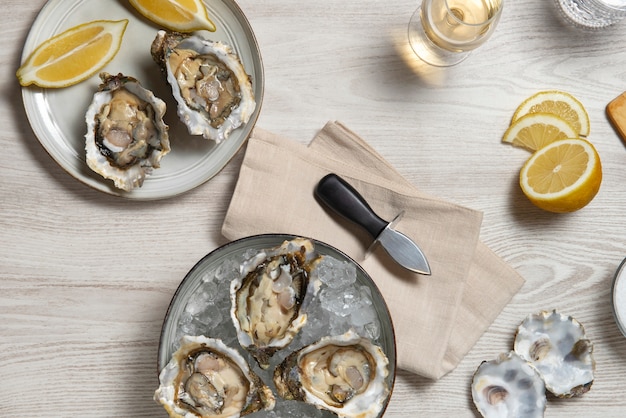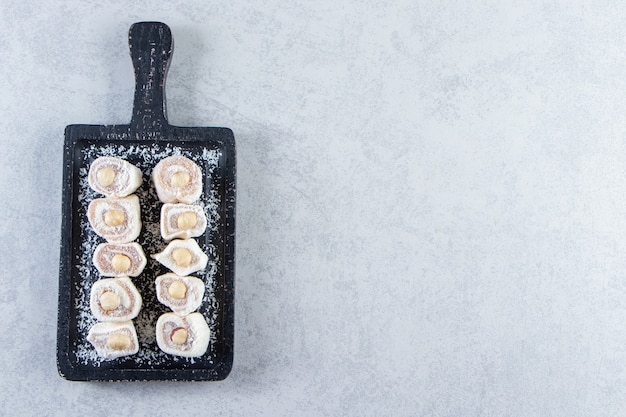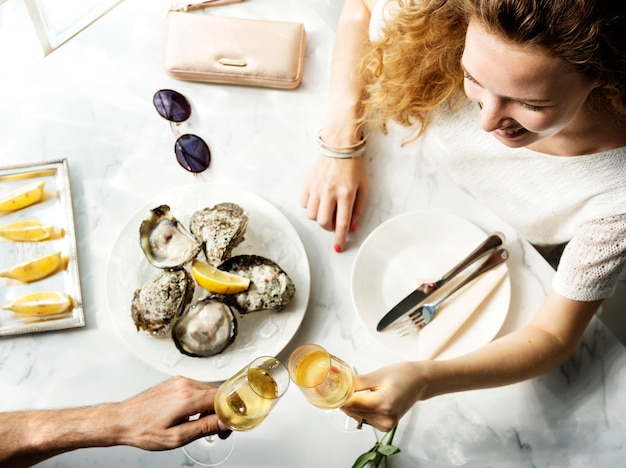You’ve got a beautiful pile of scallops, and you’re ready to cook up a storm, but you’re staring at them, wondering how long to cook them. Been there, done that! I've burnt them, undercooked them, even had them explode in the pan – trust me, I've seen it all. But after years of culinary experiments, I've finally cracked the code to perfect scallop cooking. So, grab your apron, put on the kettle, and let’s embark on this delicious journey together, exploring the ultimate guide to nailing those beautiful bivalves.
(Part 1) Getting Started: A Quick Look at Scallops

Choosing the Right Scallops: A Matter of Taste
The world of scallops is surprisingly diverse! You'll encounter two main types: dry scallops and wet scallops. Dry scallops, as their name implies, are less watery, giving them a more concentrated, intense flavour. They tend to be a bit smaller and firmer, perfect for searing and grilling. Wet scallops, on the other hand, are plump and juicy, with a milder, sweeter taste. They're great for dishes where they'll be cooked in a sauce or broth. Ultimately, the choice between dry and wet scallops comes down to personal preference. Do you crave intense flavour or juicy texture?
Then comes the size. Scallops come in a range of sizes, from petite bay scallops to giant sea scallops. Don't be fooled by size; smaller scallops can be incredibly flavorful. Bay scallops, in particular, have a delicate sweetness that's hard to resist. For a satisfying bite, though, larger scallops, like sea scallops, are a good choice. No matter the size, make sure your scallops are fresh – look for ones with a bright, pearly sheen, firm texture, and a mild, fresh scent.
Preparing the Scallops: A Few Simple Steps
Now, before the cooking begins, give those scallops a quick rinse under cold water. Gently pat them dry with paper towels. If you're using dry scallops, you'll want to remove the muscle from the side. This tough little bit, called the "foot" or "adductor muscle," can be chewy and unpleasant, so it's best to remove it before cooking. You can discard the muscle or use it to add a bit of flavour to a stock.
And now, your scallops are ready for the culinary spotlight! Remember, the key to successful scallop cooking is to keep it simple. Don't overcomplicate things. Let the beautiful scallops shine on their own.
(Part 2) cooking scallops: A Guide to Different Methods

pan-seared scallops: The Classic for a Reason
This is my go-to method for scallops – it's fast, easy, and produces stunning results. Start with a heavy-bottomed pan. The heavier the pan, the more even the heat distribution, which is crucial for perfectly cooked scallops. Heat the pan over high heat. You want that pan screaming hot, ready to sear those scallops to perfection. Add a generous amount of oil, just enough to coat the bottom of the pan. I love using a neutral oil like avocado oil or grapeseed oil because they have high smoke points and won't burn easily.
Now, let the oil get piping hot before you add the scallops. Avoid overcrowding the pan. If you have a lot of scallops, cook them in batches to ensure even browning. And here comes the magic: let them cook undisturbed for about 1-2 minutes per side. Don't touch them! Resist the urge to move them around. You want that beautiful golden crust to develop, locking in the juices and creating a delicious contrast with the tender interior. You'll know they're ready when they're nicely browned and slightly springy to the touch.
Oven-baked scallops: Simple, Elegant, and Effortless
For a more relaxed approach to scallop cooking, oven-baking is a delightful option. Preheat your oven to 400°F (200°C). Line a baking sheet with parchment paper – this will prevent sticking and make cleanup a breeze. Arrange the scallops in a single layer on the baking sheet, ensuring they're not touching. Drizzle them with olive oil, season generously with salt and pepper, and add a sprinkle of your favourite herbs like thyme, rosemary, or parsley. You could also use a pinch of garlic powder or lemon zest for extra flavour.
Bake for 5-7 minutes, or until the scallops are cooked through. Again, those cooking times are just guidelines. Check for doneness: they should be opaque in the centre and slightly firm to the touch. If you're unsure, cut one open and make sure the inside is white and cooked through, not translucent or pink.
grilled scallops: Embracing the Smoky Flavour
There's something magical about grilling scallops. That smoky flavour adds a whole new dimension to their taste. Preheat your grill to medium-high heat. Clean the grill grate and lightly oil it with a heat-resistant oil like avocado oil. You want to prevent sticking.
Thread the scallops onto skewers, ensuring they're not too crowded, or place them directly on the grill grate. Grill for 2-3 minutes per side, or until cooked through. Resist the urge to overcook them! The grill's residual heat will continue to cook the scallops even after you remove them.
Scallops in a Sauce: Elevating Flavour to New Heights
Let's add a touch of flair to your scallop experience! Cooking them in a sauce brings a whole new dimension of flavour and texture. There's a reason why creamy garlic and white wine sauce is a classic choice. Sauté some minced garlic in olive oil until fragrant. Add a splash of white wine and let it reduce until syrupy. Whisk in some heavy cream and season with salt, pepper, and a squeeze of lemon juice. Add the scallops and gently simmer until heated through, taking care not to overcook them.
But don't limit yourself to one sauce! Experiment with a lemon-butter sauce, a spicy chili sauce, or even a rich tomato sauce for a bolder flavour profile. The possibilities are endless.
(Part 3) Understanding Scallop Cooking Time: A Breakdown

The Importance of Cooking Time: Finding the Sweet Spot
You're probably thinking, "How long do I cook these beauties for?" It's a fair question! Unfortunately, there's no one-size-fits-all answer. It depends on the size of the scallops, the method of cooking, and your personal preference for doneness. A general rule of thumb is to cook scallops for about 1-2 minutes per side. But remember, overcooking scallops will make them tough and rubbery, ruining that tender, delicate texture.
How to Tell When Scallops Are Done: Signs of Perfection
The secret lies in observation! Here's how to check if your scallops are perfectly cooked:
- Opacity: They should be opaque in the centre, no longer translucent. Think of them like a pearl, not like a piece of raw fish.
- Firmness: They should be firm to the touch, not mushy or soft.
- Slight Springiness: When you press gently on the top, they should spring back slightly, indicating they're cooked through.
You can also cut one scallop open to check for doneness. The inside should be white and cooked through, not translucent or pink.
Cooking Times: A Quick Reference Guide
Here’s a quick guide to give you an idea of typical cooking times for different methods:
| Cooking Method | Cooking Time |
|---|---|
| Pan-Seared | 1-2 minutes per side |
| Oven-Baked | 5-7 minutes |
| Grilled | 2-3 minutes per side |
Remember, these are just estimates. Your oven or grill might run hotter or cooler than average, and the size of your scallops will also affect the cooking time. Use this guide as a starting point, and always check for doneness using the methods mentioned above.
(Part 4) Mastering the Art of Scallop Cooking: Tips and Tricks
Don't Overcrowd the Pan: Space is Key
Remember, crowding the pan is a recipe for disaster. If you add too many scallops at once, they'll steam instead of sear, resulting in soggy scallops with a lackluster crust. Give them space to breathe, allowing the heat to circulate evenly and create that beautiful golden sear.
Use a Good Quality Oil: The Foundation for Flavor
The right oil is essential. Choose a high-heat oil, such as avocado oil, grapeseed oil, or even a blend of olive oil and canola oil. These oils have a high smoke point and won't break down or burn easily at high temperatures. A high-quality oil will enhance the flavour of your scallops and prevent them from tasting greasy or burnt.
Seasoning Matters: Don't Skimp on Flavor
Don't underestimate the power of seasoning! A simple sprinkle of salt and pepper will bring out the natural sweetness of the scallops. But feel free to get creative. Try adding a pinch of smoked paprika, a sprinkle of fresh thyme, or even a squeeze of lemon juice for a burst of citrusy brightness.
Rest the Scallops: For Juicy, Tender Results
After you've cooked your scallops, resist the urge to dive right in. Let them rest for a few minutes before serving. This allows the juices to redistribute, ensuring they remain tender and juicy. It's a simple step that makes a big difference in the overall texture and flavour of your scallops.
(Part 5) Scallops and side dishes: Pairing Perfection
A Classic Combination: Scallops and Asparagus
This is a pairing that never fails! The sweet, delicate flavour of scallops complements the slightly bitter notes of asparagus perfectly. Roast, grill, or sauté asparagus until tender-crisp, and serve it alongside your scallops for a balanced and satisfying meal.
Creamy and Delicious: Scallops and Risotto
For a richer and more decadent experience, pair scallops with creamy risotto. The creamy texture of risotto beautifully complements the tender scallops, and a touch of lemon juice and fresh herbs adds a bright, refreshing element. It's a comforting and satisfying dish that's perfect for a special occasion.
Light and Refreshing: Scallops and Salad
For a lighter meal, serve your scallops on a bed of mixed greens. Add some fresh fruits like oranges or berries for a sweet and tangy contrast. You could also add a vinaigrette dressing for a zesty touch. It's a perfect summer dish, light and refreshing yet full of flavour.
(Part 6) scallop recipes: A Taste of Inspiration
Pan-Seared Scallops with Lemon-Butter Sauce: Classic Elegance
This recipe is a symphony of simple flavours. Start by searing the scallops in butter and lemon juice until golden brown and cooked through. The buttery richness and citrusy zing complement the scallops perfectly. Finish with a sprinkle of fresh parsley for a touch of colour and freshness.
oven-baked scallops with Garlic and Herbs: Easy and Flavorful
For a simple and satisfying weeknight meal, bake scallops in the oven with garlic, herbs, and a drizzle of olive oil. The flavours meld beautifully as the scallops bake, creating a delicious and aromatic dish. Serve it with a side of roasted vegetables for a complete meal.
Grilled Scallops with Mango Salsa: Summertime Delight
Embrace the warm weather and grill those scallops! Pair them with a vibrant mango salsa, bursting with fresh flavours. The sweet and tangy salsa contrasts beautifully with the smoky, grilled scallops. It's a perfect dish for a summer barbecue or a casual get-together.
(Part 7) FAQs: Answers to Your Burning Questions
1. Can I cook scallops from frozen?
Yes, you can cook scallops from frozen. However, they will take a little longer to cook and may not have the same texture as fresh scallops. The best way to thaw frozen scallops is to place them in the refrigerator overnight. Alternatively, you can thaw them quickly in a bowl of cold water, ensuring they are completely submerged and changing the water every 30 minutes. Once thawed, pat them dry with paper towels and proceed with your chosen cooking method.
2. What happens if I overcook scallops?
Overcooked scallops will become tough and rubbery, losing their delicate texture and flavour. They will also lose their juicy interior and become dry. The key is to cook them quickly and to check for doneness frequently. If you're unsure, always err on the side of undercooking. It's much easier to cook scallops a bit longer than to try to salvage an overcooked scallop.
3. Can I add scallops to a pasta dish?
Absolutely! Scallops are a delicious addition to any pasta dish. You can add them to your favourite pasta sauce, such as a creamy alfredo sauce, a spicy tomato sauce, or a light lemon-butter sauce. You can also toss them with cooked pasta and fresh herbs for a simple and satisfying dish. The delicate flavour of scallops blends beautifully with pasta, creating a harmonious culinary experience.
4. Can I freeze scallops?
Yes, you can freeze scallops. Wrap them tightly in plastic wrap and then place them in a freezer-safe bag, squeezing out as much air as possible. Freeze for up to 3 months. When ready to use, thaw them in the refrigerator overnight. Frozen scallops may have a slightly different texture than fresh scallops, but they can still be delicious in many dishes.
5. What are some good wines to pair with scallops?
Scallops are incredibly versatile and pair well with a wide range of wines. For a crisp and refreshing pairing, try a Sauvignon Blanc, a dry Riesling, or a Pinot Grigio. If you prefer a fuller-bodied wine, try a Chardonnay, a Vermentino, or a dry rosé. For a bold flavour, consider a light-bodied red like Pinot Noir or a dry sparkling wine.
Remember, there are no hard and fast rules when it comes to wine pairings. Ultimately, choose a wine that you enjoy and that complements the flavours of your scallops.
(Part 8) Conclusion: The Joy of Scallop Cooking
Now, you're armed with the ultimate guide to conquering scallop cooking! From choosing the perfect scallops to mastering different cooking methods and finding the perfect side dish pairings, you're ready to take on any scallop recipe with confidence. Whether you're a seasoned chef or a kitchen newbie, I hope this guide has inspired you to embrace the culinary magic of these delicate bivalves. Get those ingredients ready, fire up the pan, and enjoy the incredible flavour and versatility that scallops bring to the table.
Everyone is watching

Perfect Rice Every Time: The Ultimate Guide to Cooking Rice
Cooking TipsAs a self-proclaimed foodie, I've always been a bit obsessed with rice. It's the foundation of countless cuisi...

Prime Rib Roast Cooking Time Chart: Per Pound Guide
Cooking TipsPrime rib roast. Just the name conjures images of lavish dinners, crackling fires, and hearty laughter. It’s ...

The Ultimate Guide to Cooking Asparagus: Tips, Techniques, and Recipes
Cooking TipsAsparagus. The mere mention of this spring delicacy conjures up images of vibrant green spears, crisp and burs...

Ultimate Guide to Cooking the Perfect Thanksgiving Turkey
Cooking TipsThanksgiving. Just the word conjures up images of overflowing tables laden with delicious food, the scent of r...

How Long to Bake Potatoes in the Oven (Perfect Every Time)
Cooking TipsBaked potatoes are a staple in my kitchen. They're incredibly versatile, delicious, and surprisingly easy to m...
